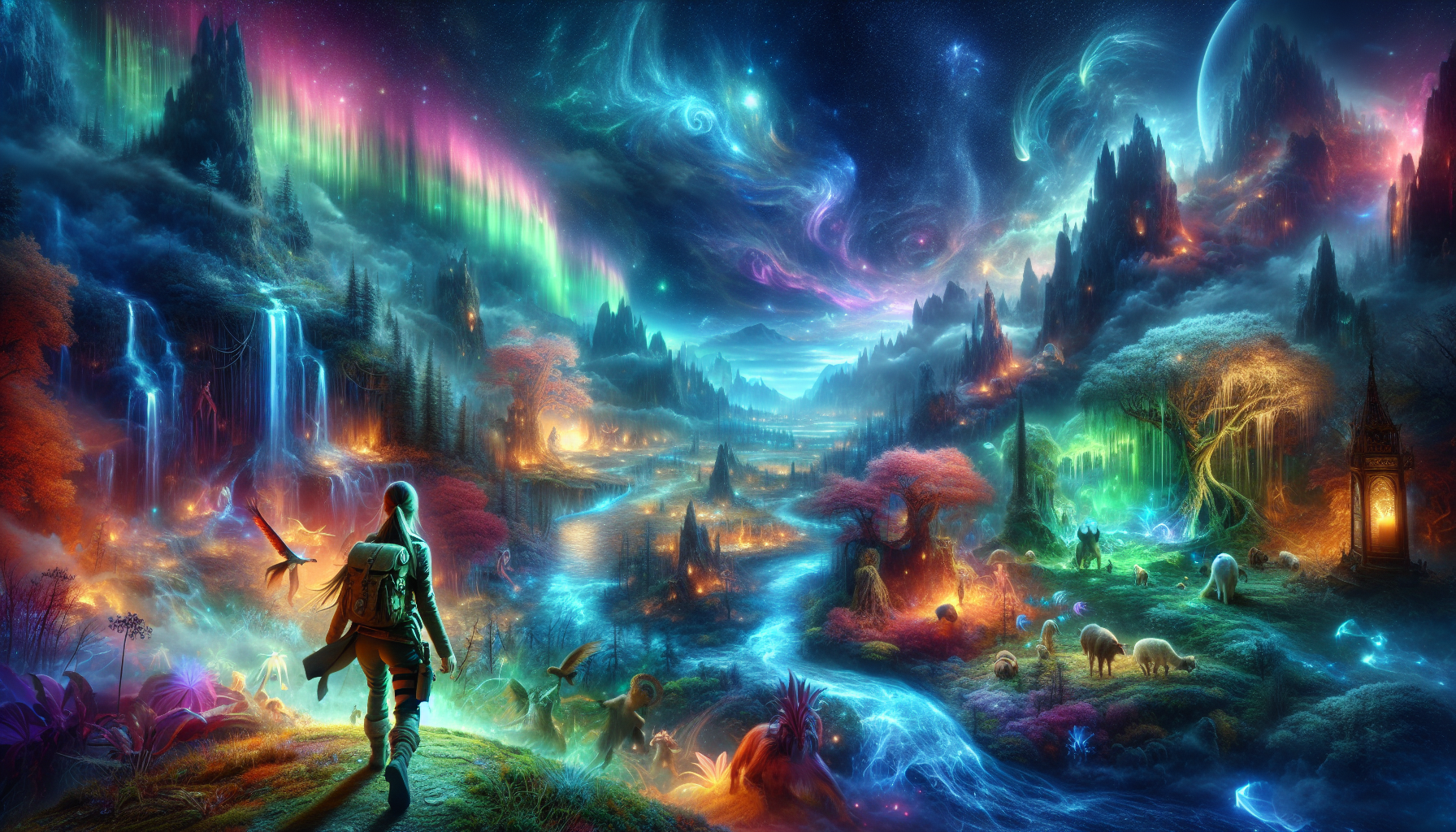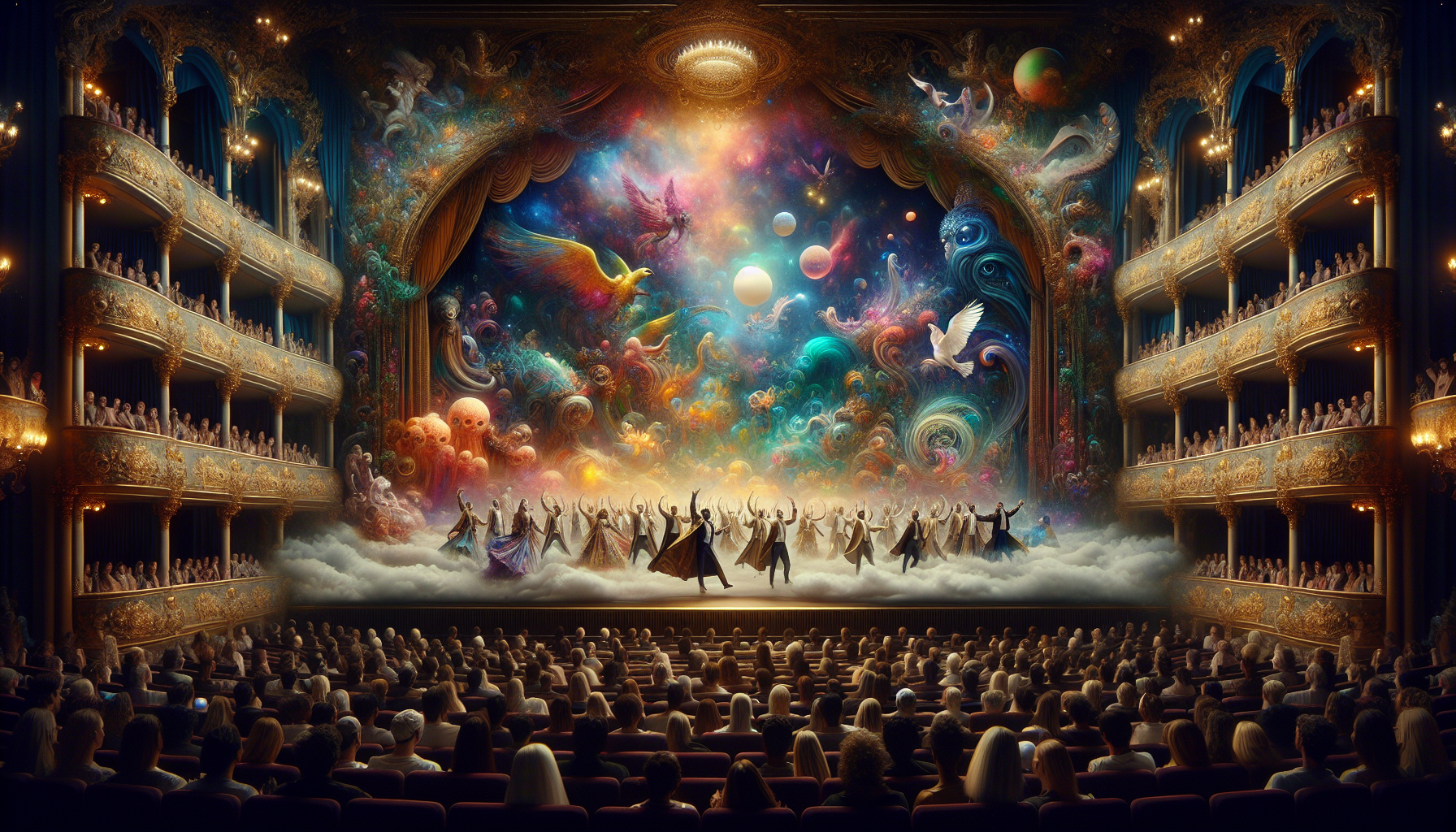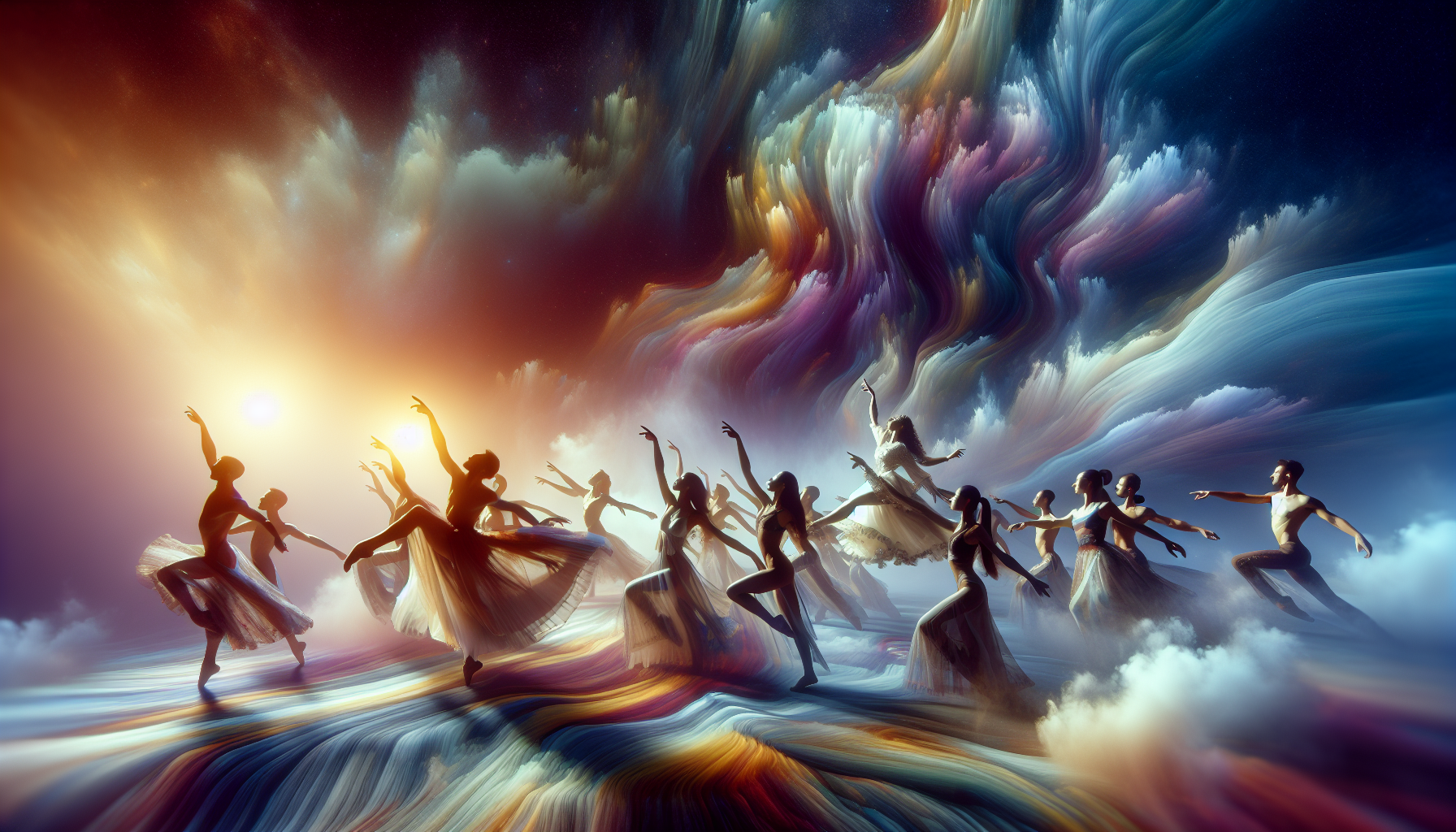Dreams have fascinated humanity for millennia, serving as windows into the subconscious and reflecting our deepest thoughts, desires, and fears. Among the myriad of dream themes, one of the most intriguing is the appearance of mirror images. Imagine waking from a dream where you stood before a mirror, gazing into your own eyes, only to see a reflection that wasn’t quite your own. What could this possibly mean? In the enigmatic world of dreams, mirrors often symbolize self-examination, identity, and transformation, acting as portals to the hidden recesses of our minds. The reflections we encounter while dreaming are not mere illusions; they are powerful symbols that can unlock mysteries about our inner selves. Join us as we delve into the captivating realm of mirror images in dreams and discover what these reflections reveal about our subconscious 🪞.
As we embark on this journey, we’ll explore the psychological interpretations of mirror dreams, drawing insights from renowned theorists like Sigmund Freud and Carl Jung. Their groundbreaking work laid the foundation for understanding how dreams serve as the mind’s playground, where unresolved conflicts and repressed emotions come to life. But our exploration won’t stop there. We’ll also examine contemporary perspectives from modern psychologists and dream analysts who offer fresh insights into the meanings behind these reflective visions. Whether your dreams present you with distorted reflections or mirror images that communicate with you, each scenario offers a unique lens through which to understand your waking life. By the end of this article, you will have a comprehensive understanding of how mirror dreams can be both a reflection of your current state and a guide to personal growth and self-awareness.
In addition to psychological interpretations, we’ll navigate through the cultural and historical contexts that shape our perceptions of mirrors in dreams. From ancient myths and folklore to contemporary art and literature, mirrors have long been imbued with symbolism and mystique. These cultural narratives provide rich layers of meaning, helping us decode the personal and universal messages embedded in our dreams. Finally, we will offer practical tips for dream analysis, enabling you to interpret your own mirror dreams with greater clarity and purpose. By engaging with these dream reflections, you can uncover hidden truths about yourself, confront fears, and embrace opportunities for transformation. So, are you ready to unlock the mysteries that lie within your mirror images and discover the profound insights they hold? 🌙✨
The Enigmatic Nature of Mirror Images in Dreams
Dreams have fascinated humanity for centuries, with various cultures attributing different meanings to these nighttime experiences. Among the myriad of dream symbols, mirror images stand out as particularly intriguing. They often reflect more than just our physical appearance; they delve into the deepest recesses of our subconscious mind. When we dream of mirrors, we’re often engaging in a dialogue with our inner selves, exploring aspects of our identity that we might not be aware of in our waking life. Mirrors in dreams can serve as a portal to understanding our deepest fears, desires, and hidden truths.
Mirror dreams are not merely about vanity or self-reflection. They can symbolize the way we perceive ourselves or how we think others perceive us. This reflection often goes beyond the superficial layer and can reveal profound insights into our subconscious mind. The symbolism of mirrors in dreams is complex and can vary depending on the context and the dreamer’s personal experiences. For instance, a broken mirror might suggest a fractured self-image or unresolved internal conflict, while a clear, bright mirror could indicate clarity and self-acceptance.
Interpreting mirror dreams requires a deep understanding of one’s current emotional state and the specific circumstances surrounding the dream. It is essential to consider the emotions felt during the dream, as they can provide valuable clues about the underlying message. In many cases, mirror dreams are a call to introspection, urging us to examine aspects of our lives that we might be neglecting or to acknowledge parts of ourselves that we have been avoiding.
Psychological Interpretations of Mirror Images in Dreams
The psychological perspective on mirror images in dreams often aligns with the theories proposed by renowned psychoanalysts such as Sigmund Freud and Carl Jung. Freud viewed dreams as a manifestation of our repressed desires and unfulfilled wishes. In this context, mirrors might represent an opportunity to confront these hidden aspects of our psyche. They might also serve as a metaphor for self-examination, encouraging us to confront parts of ourselves that we have been suppressing.
Carl Jung, on the other hand, introduced the concept of the “shadow self,” which represents the unconscious part of our personality that we tend to hide from others and ourselves. Mirror images in dreams might be a reflection of this shadow self, prompting us to acknowledge and integrate these hidden aspects into our conscious self. Jung believed that embracing our shadow self is crucial for achieving personal growth and self-actualization.
These psychological interpretations highlight the importance of self-awareness and introspection when analyzing mirror dreams. By understanding the symbolism of mirrors and the emotions associated with these dreams, we can gain valuable insights into our subconscious mind and embark on a journey of self-discovery and personal transformation.
Cultural and Symbolic Meanings of Mirrors in Dreams
Across different cultures and traditions, mirrors hold diverse symbolic meanings that can influence how they are perceived in dreams. In some cultures, mirrors are seen as portals to other realms or as tools for divination. For instance, in Chinese folklore, mirrors are believed to ward off evil spirits and reflect one’s true nature. In this context, dreaming of a mirror might suggest a confrontation with one’s inner demons or a revelation of one’s true self.
In Western culture, mirrors are often associated with vanity and self-reflection. This perception can influence how mirror dreams are interpreted, with the dreamer being encouraged to reflect on their self-image and how they present themselves to the world. In this context, a dream involving a distorted or unclear mirror image might indicate insecurities or a lack of self-confidence.
Religious and spiritual beliefs also play a significant role in shaping the symbolism of mirrors in dreams. In Hinduism, mirrors are considered to symbolize the mind, reflecting one’s thoughts and emotions. Dreaming of a mirror might thus suggest a need to examine one’s mental state and emotional well-being. Similarly, in Islam, mirrors are seen as a reflection of one’s soul, and dreams involving mirrors can be interpreted as a call for spiritual introspection and self-improvement.
Personal Interpretations and Individual Experiences
While cultural and psychological interpretations provide a framework for understanding mirror dreams, it is crucial to consider the dreamer’s personal experiences and emotions. Each individual’s relationship with mirrors is unique, shaped by their personal history, beliefs, and experiences. As such, the interpretation of mirror dreams can vary significantly from person to person.
For some, mirrors might evoke feelings of self-criticism or dissatisfaction, leading to dreams that reflect these negative emotions. In contrast, others might view mirrors as a source of empowerment and self-acceptance, resulting in dreams that convey positive and uplifting messages. It is essential to consider the context of the dream and the emotions experienced during the dream to gain a comprehensive understanding of its meaning.
To facilitate this personal interpretation, dream journals can be a valuable tool. By recording and reflecting on dreams involving mirrors, individuals can identify patterns and recurring themes that might provide insight into their subconscious mind. This practice can also help individuals track their personal growth and emotional development over time.
Unlocking the Potential of Mirror Dreams for Personal Growth
Mirror dreams hold significant potential for personal growth and self-discovery. By engaging with these dreams and exploring their symbolism, individuals can uncover hidden aspects of their personality and gain a deeper understanding of their inner self. This process of introspection can lead to greater self-awareness and emotional intelligence, enabling individuals to navigate their waking life with more clarity and purpose.
To harness the potential of mirror dreams, it is essential to approach them with an open mind and a willingness to explore the unknown. By examining the emotions and symbols present in these dreams, individuals can uncover valuable insights into their subconscious mind and use this knowledge to foster personal growth and transformation. This process requires patience and self-compassion, as confronting one’s shadow self can be a challenging but rewarding journey.
Practical Steps for Engaging with Mirror Dreams
Engaging with mirror dreams can be a transformative experience, offering valuable insights into one’s subconscious mind and personal growth. Here are some practical steps for interpreting and integrating the insights gained from mirror dreams:
- Keep a Dream Journal: Record your mirror dreams and any emotions or symbols that stand out. This practice can help identify patterns and themes that might offer insight into your subconscious mind.
- Reflect on Emotions: Consider the emotions you experienced during the dream and how they relate to your waking life. This reflection can provide valuable clues about the underlying message of the dream.
- Seek Professional Guidance: If you’re struggling to interpret your mirror dreams, consider consulting with a therapist or dream analyst for guidance and support.
- Practice Self-Compassion: Be gentle with yourself as you explore the hidden aspects of your personality. This process of introspection can be challenging but ultimately rewarding.
By engaging with mirror dreams and exploring their symbolism, individuals can uncover valuable insights into their subconscious mind and embark on a journey of personal growth and transformation. This process requires patience, self-awareness, and a willingness to explore the unknown, but the rewards can be profound and life-changing.
Conclusion
In concluding our exploration of the enigmatic world of mirror images in dreams, we find ourselves standing at the crossroads of science, psychology, and personal introspection. This journey has taken us through the varied landscapes of dream interpretation, touching upon the symbolism and significance that reflective surfaces hold within our subconscious minds.
Firstly, we delved into the historical perspectives on mirrors in dreams, uncovering how ancient cultures perceived these reflective surfaces as portals to other realms or as instruments of self-examination. This historical context set the stage for understanding the contemporary views that regard mirrors in dreams as metaphors for self-awareness and identity exploration.
We then transitioned into the psychological aspects, examining theories from luminaries such as Sigmund Freud and Carl Jung. Freud’s analysis suggested that mirrors in dreams could represent a reflection of our hidden desires and repressed emotions. In contrast, Jung posited that they might symbolize the integration of the conscious and unconscious mind, offering a glimpse into our shadow selves. Both perspectives provide invaluable insights into how our minds navigate the complex terrain of self-perception and identity.
The article also covered the various interpretations of common dream scenarios involving mirrors. For instance, seeing a distorted reflection might indicate inner conflict or anxiety, while a clear and vibrant reflection could suggest a state of harmony and self-acceptance. Such interpretations are not prescriptive but rather offer a framework for individuals to analyze their own dream experiences.
Moreover, we explored the potential of lucid dreaming as a tool for deeper understanding. By becoming aware of our dreams and taking control of the narrative, we can use mirrors as instruments for self-discovery and personal growth. Lucid dreaming allows us to confront fears, understand deeper truths about ourselves, and even rehearse for real-life scenarios, making it a powerful practice for anyone interested in personal development.
We also touched upon the scientific research surrounding dreams and the brain. Recent studies utilizing neuroimaging techniques have shed light on how certain brain areas activate during dream states, providing a biological basis for why and how we dream of mirrors. These findings offer a fascinating glimpse into the neurological underpinnings of our subconscious explorations.
In reinforcing the importance of this topic, it’s crucial to acknowledge the profound impact that understanding our dreams can have on our waking lives. Dreams are not mere nocturnal diversions; they are a window into our inner selves, offering insights that can guide our emotional and psychological growth. By paying attention to the symbols and themes in our dreams, we can unlock deeper understanding and foster a more harmonious relationship with ourselves.
As we conclude, I encourage you, dear reader, to reflect on your own dream experiences. What do the mirrors in your dreams reveal about your current state of mind or life situation? I invite you to engage with this content by sharing your thoughts and interpretations in the comments section. Your insights could inspire and enlighten others on their own journeys of self-discovery.
Moreover, consider sharing this article with friends or on social media platforms. The mysteries of dreams are a universal experience, and discussing them can open up new avenues for understanding and connection. If you’re intrigued by the potential of dreams to offer profound insights, perhaps try keeping a dream journal or exploring the practice of lucid dreaming.
In your quest for further knowledge, numerous resources are available online and in print. Websites like Psychology Today provide articles on dream analysis and subconscious exploration, while books such as “The Interpretation of Dreams” by Sigmund Freud and “Man and His Symbols” by Carl Jung offer foundational insights into the world of dreams.
As you continue to explore the depths of your subconscious, remember that dreams are a powerful tool for self-awareness and personal transformation. Embrace them with curiosity and openness, and let them guide you toward a deeper understanding of yourself and the world around you. 🌙✨
Gabriel is a visual storyteller and dream archivist whose work explores the fragile boundary between memory and imagination. Through layered visuals and symbolic design, Gabriel captures the fleeting essence of dreams — those strange, beautiful, and sometimes haunting fragments that drift through sleep and linger in waking thought.
His creative journey is rooted in a deep fascination with the subconscious and the imagery it conjures. From half-remembered landscapes to recurring symbols and surreal encounters, each piece Gabriel brings to life becomes a portal into the inner archive — where time distorts, meanings shift, and personal mythology takes form.
With a background in handcrafted artistry and visual composition, Gabriel merges intuition with intention. His work doesn’t merely depict dreams; it preserves them, translating ephemeral moments into tangible expressions that evoke emotion, curiosity, and quiet revelation. Each visual is both a record and an invitation to explore the rich terrain of inner life.
Through illustrated dream journals, symbolic studies, and visual essays, Gabriel invites others to connect with the poetic architecture of their subconscious landscapes. His art becomes a mirror — not only of what we see at night, but of what we carry deep within.
His work is a tribute to:
-
The fragile beauty of forgotten dreams
-
The language of symbols in the subconscious mind
-
The inner worlds we visit but rarely name
Whether you’re a lucid dreamer, a seeker of hidden meanings, or someone fascinated by the mystery of sleep-born stories, Gabriel welcomes you to step into a space where dreams are not lost — they are archived, one vision, one sketch, one silent narrative at a time.





